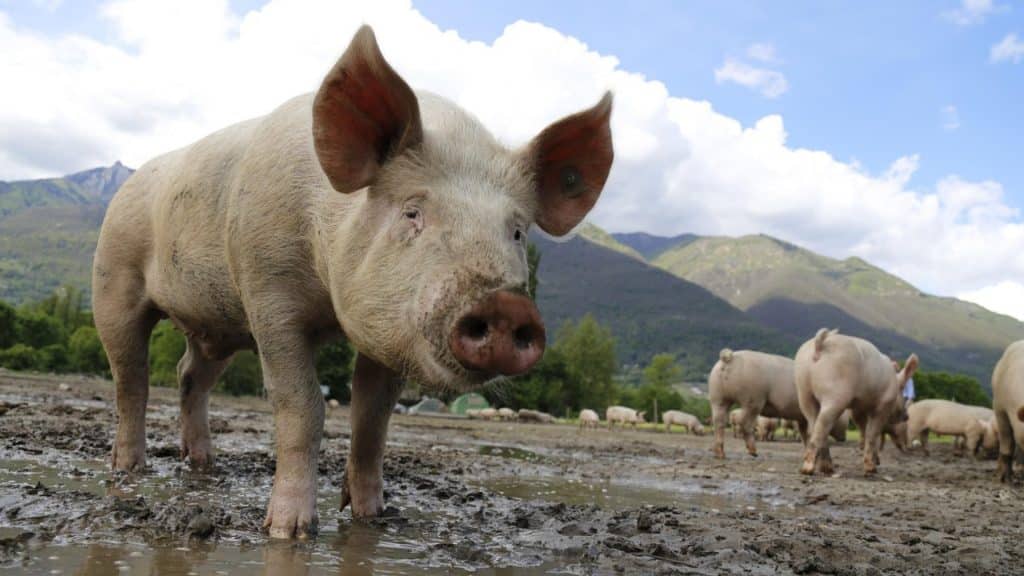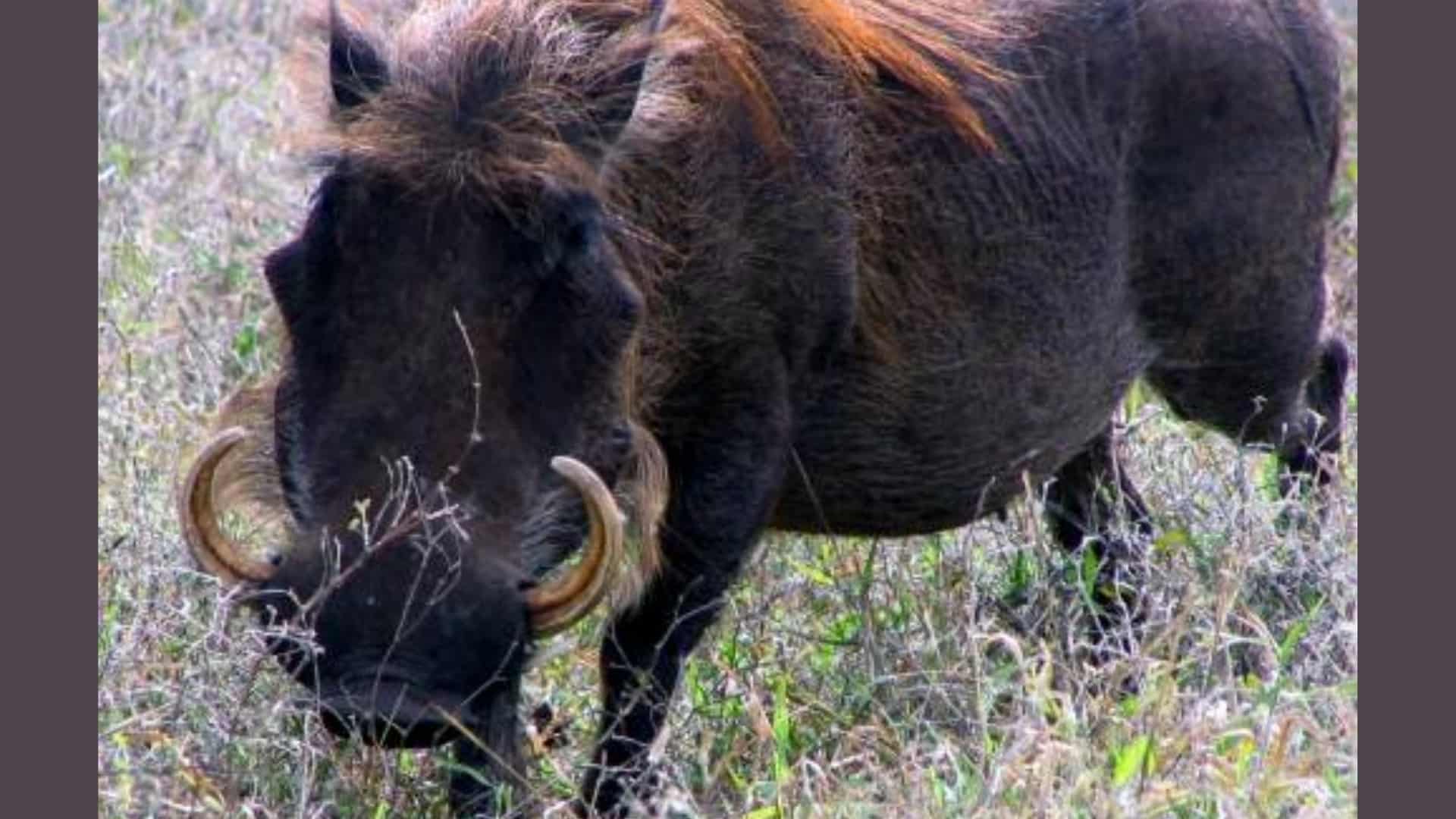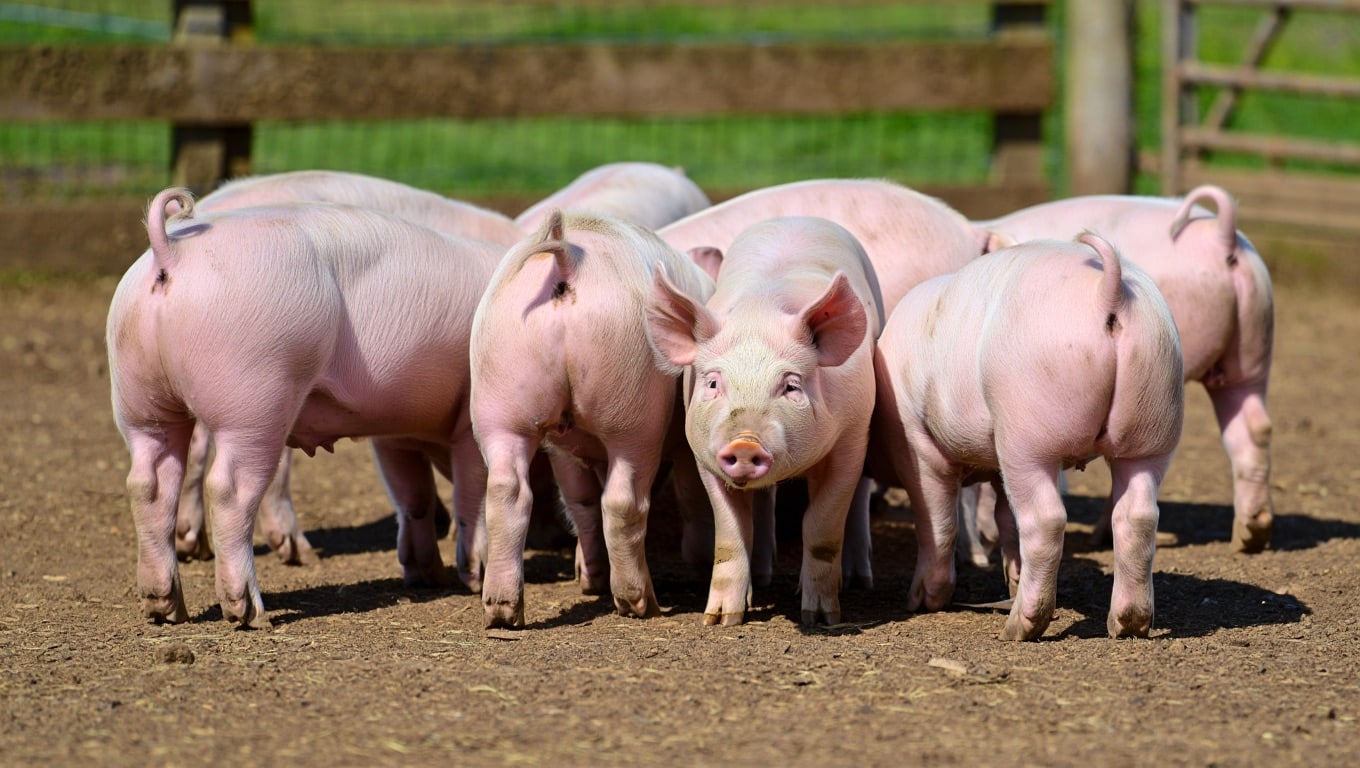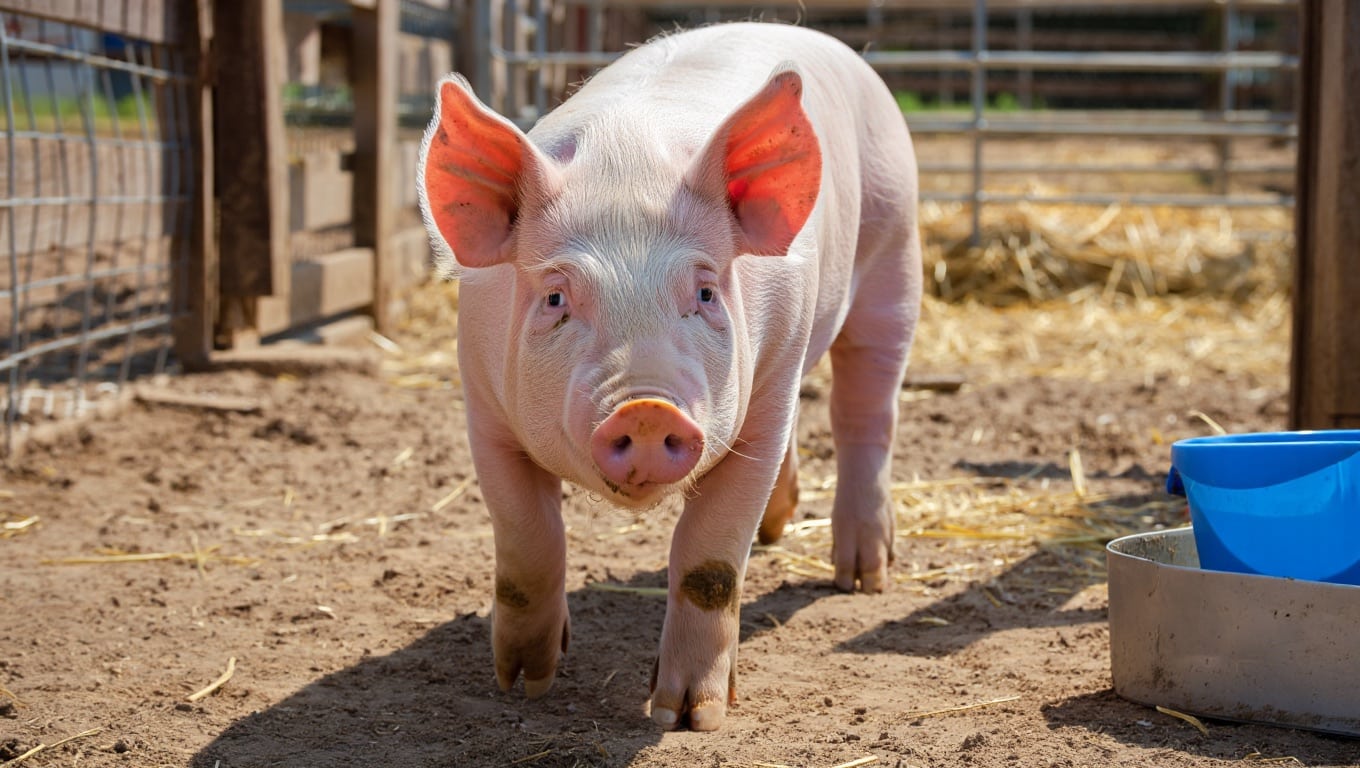Do you think that pigs are just muddy animals with curly tails?
Well, there is a lot more going on behind those snouts than most people realize.
These animals can dream, play games, enjoy music, and even recognize themselves in a mirror like some humans do.
They come in many shapes and sizes and have lived with people for thousands of years on farms, in forests, and sometimes even as pets.
Get ready to learn weird facts about pigs that show how clever, curious, and downright surprising they are.
Some of these may leave you speechless.
Facts Related to Pig Intelligence & Behavior
Pigs are surprisingly smart animals with complex cognitive abilities.
Their intelligence rivals that of some primates and marine mammals, showcasing problem-solving skills, memory, and social understanding that often go unnoticed.
1. Pigs are highly intelligent, capable of learning tasks, recognizing their names, and solving problems similar to primates and dolphins.
2. They can learn to play video games by using a joystick to move a cursor, showing their ability to process information.
3. Pigs can remember complex tasks and locations, relying on both visual and spatial memory to check & take care of their surroundings.
4. They show cognitive abilities that rival dogs, capable of understanding simple commands like sit, come, and roll over.
5. Pigs can differentiate between different shapes and colors, proving their ability to learn visual concepts.
6. Solve problems by trial and error, using a methodical approach when faced with puzzles or obstacles.
7. Pigs can recognize themselves in a mirror, a sign of self-awareness that only a few animal species possess.
8. They learn new behaviors through repetition and can retain them over long periods, similar to how humans learn.
9. Pigs understand cause and effect, recognizing that their actions can lead to rewards such as food or attention.
10. They show a preference for routine, easily adapting to structured environments and familiar tasks.
11. Pigs can remember the location of objects, food, and even people, helping them explore new areas efficiently.
12. Can communicate using vocalizations and body language, allowing them to express various emotions and needs.
13. Enjoy mental challenges and are often seen exploring new environments or figuring out how to manipulate objects.
Facts Related to Physical Traits & Abilities
Beyond their muddy exterior, pigs possess remarkable physical features and sensory capabilities that help them thrive in diverse environments, from their powerful snouts to specialized eyesight and agility.
14. Have a highly sensitive snout that they use for rooting through soil to find food, including truffles.
15. Pigs’ hooves are strong and durable, enabling them to go through rugged terrain, including rocky and muddy areas.
16. Can run at speeds of up to 11 miles per hour, surprising many with their speed and agility.
17. A pig’s skin is delicate and sensitive, which is why they often wallow in mud to protect themselves from sunburn.
18. Pigs have sharp tusks that grow continuously throughout their lives, which are used for self-defense or dominance during mating.
19. Pigs have a strong sense of hearing, allowing them to detect sounds that are beyond the range of human hearing.
20. Their sense of smell is over 2,000 times stronger than that of humans, helping them locate food and detect danger.
21. They have a third eyelid called a nictitating membrane, which helps protect their eyes and keep them moist.
22. Pigs’ tails are naturally curled, and a straightened tail can indicate stress or discomfort.
23. Despite their body size, pigs are incredibly agile and capable of climbing short obstacles or going through tight spaces.
24. Are skilled swimmers and enjoy water, often seeking out ponds or lakes to cool off or play.
25. Pigs can sleep for up to 8 hours a day, much like humans, to restore their energy.
26. Pigs’ hooves are similar to cloven hooves, which help them stay stable while walking or running on uneven surfaces.
27. Pigs’ teeth grow constantly, requiring regular care and maintenance to avoid issues like overgrowth or infections.
28. Can live for over 15 years in the right conditions, showcasing their ability to thrive in both domesticated and wild environments.
Facts Related to Social Life & Interaction
They are highly social creatures who communicate, form strong bonds, and maintain structured social groups.
Their interactions reveal rich emotional lives and complex social behaviors.
29. Pigs are social creatures and prefer to live in groups, forming close bonds with other pigs.
30. Communicate with each other through a variety of vocalizations, from grunts and squeals to snorts and oinks.
31. They often groom one another, using their snouts to reinforce social bonds within their group.
32. Pigs enjoy playing with each other and will often engage in games like chasing, nuzzling, or playfully pushing each other.
33. Exhibit episodic-like memory, allowing them to recall past events and use that information to solve current problems.
34. Pigs’ vocalizations vary regionally, indicating a form of animal ‘dialects’ depending on their location or group.
35. Demonstrate affection for each other through physical touch, such as nuzzling or lying close together for warmth.
36. Sows (female pigs) are protective mothers, often forming close relationships with their piglets for several weeks.
37. Pigs are highly social and can experience loneliness or anxiety when isolated from their group.
38. Pigs create strong social structures, with dominant pigs often taking leadership roles within a group.
39. Use body postures such as tail movements and ear positioning to convey social status within the group.
40. Pigs have unique personalities; some are highly outgoing, while others are more reserved and quiet.
41. They are very vocal when expressing their emotions, including excitement, fear, or discomfort.
42. When threatened, pigs will often run to safety or display defensive behavior to protect themselves and their group.
Facts Related to Health & Care
Pigs have specific physiological characteristics and health requirements that reflect their natural biology and behaviors, influencing their diet, living conditions, and susceptibility to certain health issues.
43. Need access to clean water and a balanced diet of grains, vegetables, and occasional protein to stay healthy.
44. Pigs have sweat glands only on their snouts, so they rely on behaviors such as wallowing to regulate body temperature.
45. They can suffer from heatstroke in hot weather, so it’s important to provide them with shade and cool water.
46. Regular veterinary care is essential to ensure pigs remain healthy and free from diseases or infections.
47. Pigs need a clean environment to prevent diseases caused by parasites or poor sanitation.
48. Highly susceptible to dehydration, especially in warm temperatures, so constant access to fresh water is crucial.
49. Pigs have sensitive skin and can easily suffer from sunburn, so it’s essential to provide them with shelter and mud for protection.
50. Regular hoof trimming is necessary to prevent discomfort and avoid infections caused by overgrown hooves.
51. Pigs are prone to respiratory issues if kept in poorly ventilated spaces, so it’s important to maintain proper airflow in their living area.
52. Pigs continuously chew and gnaw objects as a natural behavior that helps wear down their teeth and alleviate boredom.
53. Pigs should be vaccinated regularly to protect against diseases like swine flu, foot-and-mouth disease, and other viral infections.
54. Susceptible to stress and should be kept in calm, familiar environments to prevent anxiety-related health issues.
55. Pigs are susceptible to parasitic infections such as lice, which can cause skin irritation, so regular treatment is important.
56. Pigs require enrichment activities to stay mentally and physically active, as boredom can lead to depression or destructive behaviors.
57. Pigs should be provided with enough space to roam and forage, as confined spaces can cause frustration and poor health.
58. Prone to developing arthritis as they age, particularly if they are overweight or don’t get enough exercise.
59. Need proper dental care to prevent gum disease and tooth decay, which can affect their overall health.
60. Require a balanced diet of protein, carbohydrates, and fats to maintain energy levels and overall well-being.
Facts Related to Cultural Significance & Fun Facts
Pigs have been intertwined with human culture for thousands of years. Their influence spans folklore, language, and practical roles that surprise many beyond the farmyard.
61. In ancient cultures, pigs were symbols of prosperity, and their presence was believed to bring wealth and good fortune.
62. The expression “bringing home the bacon” originates from medieval times, where a pig was considered a valuable asset for a family.
63. Pigs are featured in popular children’s stories, such as “The Three Little Pigs,” where they represent hard work and perseverance.
64. In some cultures, pigs are revered as symbols of fertility and abundance, and they are often associated with good harvests.
65. Wild pigs often use their sense of smell not only for food finding but also to detect the reproductive status of other pigs.
66. The domestication of pigs dates back over 9,000 years, as humans recognized their value for meat and other resources.
67. Pigs have been a part of human culture for centuries, appearing in folklore, literature, and art as symbols of various traits, from gluttony to good fortune.
The Bottom Line
Pigs are full of strange and smart surprises that most people never expect.
From dreaming like humans to playing games and chatting with over 20 sounds, their weird talents are real and surprising.
These weird facts about pigs show that they are not just barn animals but clever creatures with big personalities and unique habits.
Now that you know the weird side of pigs, which fact made you smile or say “really?”
Share your favorite in the comments. We would love to hear what surprised you most.























